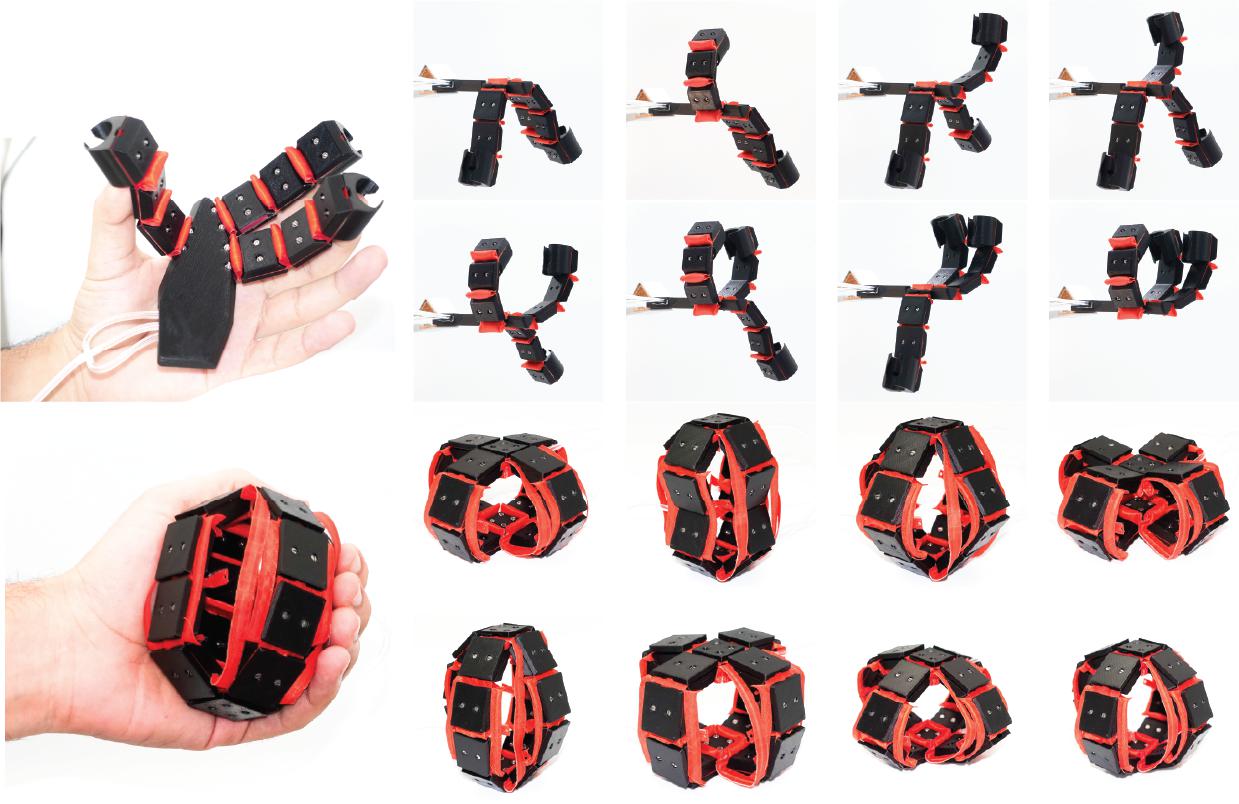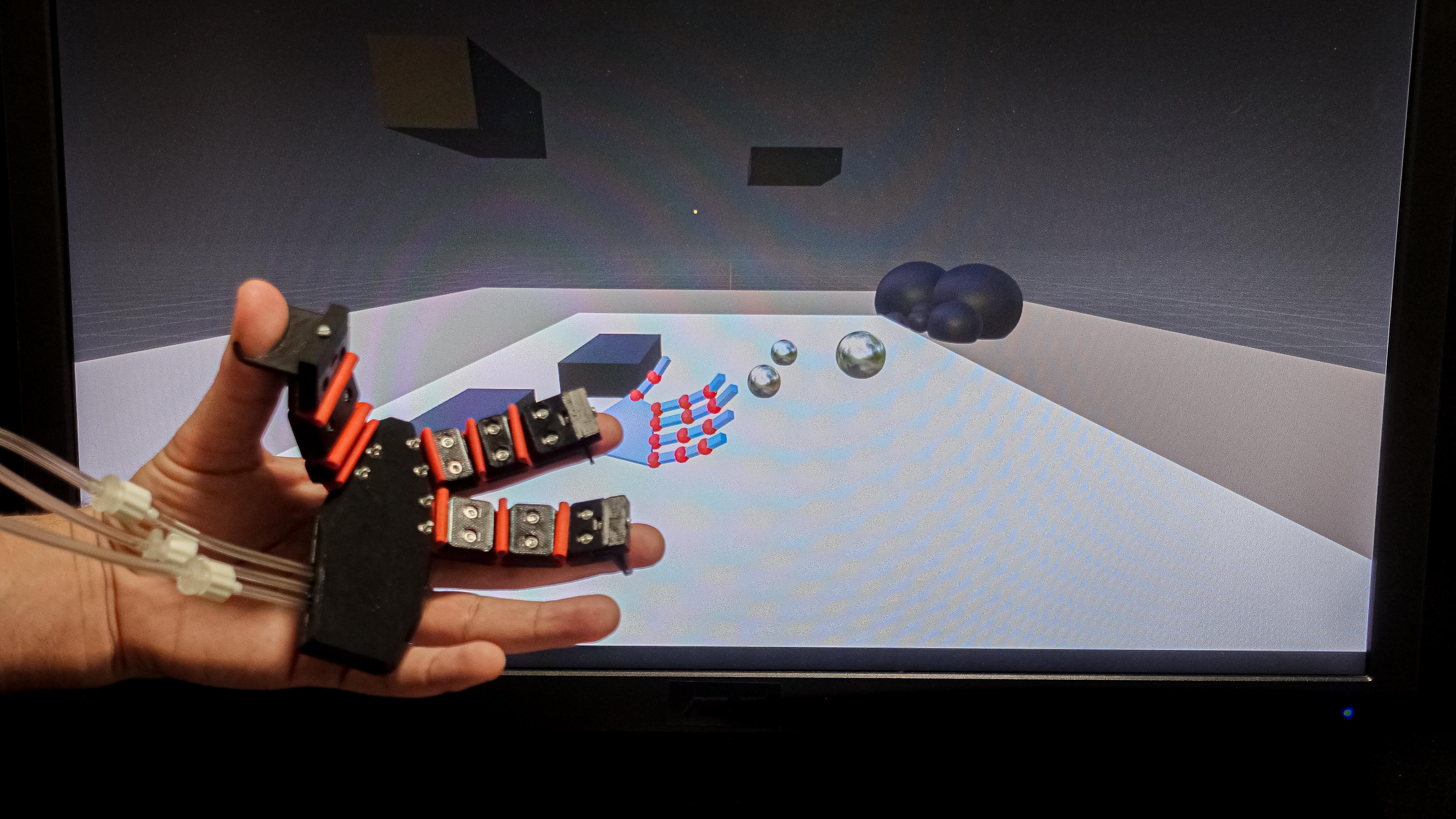
One possible configuration of the TangiBall. 2025 RRL EPFL CC BY SA 4.0
EPFL researchers have developed a customizable soft robotic system that uses compressed air to produce shape changes, vibrations, and other haptic, or tactile, feedback in a variety of configurations. The device holds significant promise for applications in virtual reality, physical therapy, and rehabilitation.
In contrast to its versatile and rather complex 16 possible configurations, the design of the Digits framework, developed in the Reconfigurable Robotics Lab in EPFL's School of Engineering, is relatively simple. Every configuration is made of multiple modules - or Digits - that are composed of rigid links joined by flexible joints. These joints are controlled by pressurized air pouches to change the modules' shape and stiffness.
In a study recently published in Advanced Intelligent Systems, Reconfigurable Robotics Lab head Jamie Paik and her team present two Digits configurations - the wearable TangiGlove and hand-held TangiBall - demonstrating their framework's versatility.
"Haptic, or tactile, interfaces can enhance virtual reality experiences by emulating real-world touch, and support rehabilitation through interactive systems. But there is a real need for more generalized reconfigurable designs and control methods," explains PhD student and first author Serhat Demirtas.

Thanks to its modular design, the Digits framework holds potential for a wide range of applications, including progressive muscle training and motor recovery as well as different configurations for haptic interfaces in virtual environments.
Matching the sensory richness of human touch
Unlike other human senses like vision and hearing, which are largely passive, the sense of touch requires complex actions, like rubbing or grasping, to perceive texture, temperature, weight, shape, or stiffness. Haptic technologies are therefore often developed for a single use or aspect of touch, as it is extremely challenging to create systems that can combine adaptability and scalability with a lifelike haptic experience.
Our goal with the Digits modules is to redefine human-machine interaction through reconfigurable robots that adapt their shape, stiffness, and haptic feedback.
The Digits framework meets this challenge thanks to the signature reconfigurable robotics technology of Paik's lab. Remarkably, it spans two major categories of robotic configuration: closed-chain and open-chain. While open-chain structures consist of series of connected links fixed at one end, like a robotic arm, closed-chain configurations usually have a loop design with two fixed ends. The open-chain TangiGlove therefore resembles an exoskeleton, which can be used to deliver stiffness feedback to the wearer. Meanwhile, the closed-chain TangiBall has four connected Digits that can assume up to eight different shapes - ranging from a cube to a sphere - in addition to providing stiffness feedback. Both devices can also produce vibrations.

In addition to its modular design, the Digits framework is notable for its focus on pneumatic (compressed air)-based actuation, which is an underexplored area of robotics for personalized haptic experiences. To close this gap, the scientists extended the open-source robotics software Feelix, enabling users to create custom pneumatic haptic interaction profiles. The machine learning-based system can sense touch-induced changes in the Digits modules and create new intelligent, intuitive interactions - with no coding required.
The team already has plans to develop the technology's rehabilitation potential by evaluating therapeutic scenarios and long-term usability. They are also investigating a wider range of applications via new configurations, especially those that leverage the device's quick transitions between different, dimensions, shapes, and stiffnesses - an essential prerequisite for real-time interaction in virtual and augmented environments.
"Our goal with the Digits modules is to redefine human-machine interaction through reconfigurable robots that adapt their shape, stiffness, and haptic feedback. This adaptability supports more tangible virtual reality, effective rehabilitation, and richer experiences for everyone - regardless of their size, ability, and need," Paik emphasizes.






